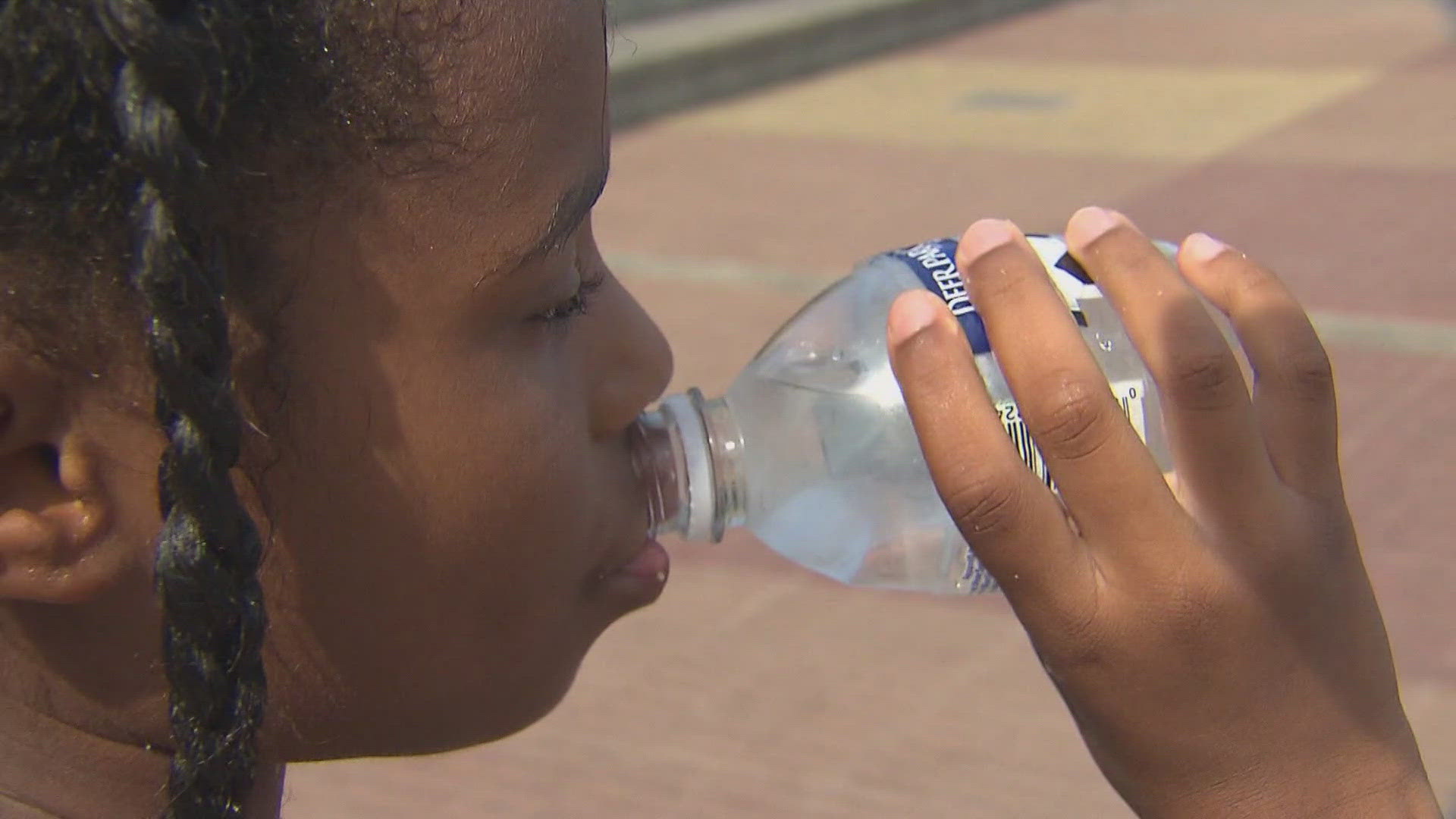PHOENIX — Even though the summer season is unofficially over, Mother Nature doesn't get the memo here in the Sonoran Desert.
In September, the normal average maximum temperature in Phoenix is 100.4 degrees. Without frequent hydration, this can be dangerous for young athletes.
Dr. Minnie Stout with Arizona College of Nursing suggests students take a 10 to 15-minute break for every 40 minutes in the heat.
"Making sure that they hydrate plenty, two to three hours before the game, and then also at least 30 minutes before the game and then of course during," she added.
Hydration during exercise is key. For kids, Stout recommends 10 gulps of water every 15 to 20 minutes.
"Educate your children. Have it become a part of your own way of life, where you drink water more in the summer. You're role-modeling that for your kids," she stated.
To make water more fun, Stout said to add some flavor, like fruits or cucumbers, as long as it's nothing sugary.
In addition to frequent hydration, there are other steps to take to prevent heat illnesses. Wear loose-fitting, lightweight clothing, a hat, and sunscreen. Monitor the length of time outdoors, take breaks often in the shade.
Always remain informed about weather-related health and safety updates. Extremely high temperatures can cause sickness and even death.
Below are the differences between heat exhaustion and heat stroke.
Heat Exhaustion:
Heavy sweating, weakness, cool, clammy and pale skin. Nausea and vomiting. Normal temperatures are possible. Headache, dizziness and possible muscle cramping.
First Aid: Lay the student down out of the sun. Loosen clothing and apply cool, wet cloths. Move the student to an air-conditioned room. Give sips of water unless nausea occurs. Seek medical attention if vomiting persists.
Heat Stroke:
Warning signs may include extremely high body temperature, (above 103 degrees) red, hot, and dry skin (no sweating), throbbing headache, unconsciousness, confusion, nausea, rapid, strong pulse, and an altered mental state.
Body temperature may rise to 106 degrees or higher within 10 to 15 minutes. Heat stroke can cause death or permanent disability if emergency treatment is not provided.
First Aid: Call for immediate medical assistance or get the student to the hospital. Delay can be deadly. Move the student to an air-conditioned environment. Mist the student using water, fans, or sponging. Use ice bags at the neck, armpit, and groin area; if the humidity is low, wrap the person in a cool, wet sheet and vigorously fan him/her. Monitor the body temperature and continue cooling efforts until the body temperature drops to 101 to 102 degrees. If the person is alert, give him/her sips of cool water. If the body temperature rises again, repeat the process. Immediately seek medical attention.
More information can be found at www.azhealth.gov/heat. For a complete heat illness prevention curriculum, email extremeweather@azdhs.gov.
>> Download the 12News app for the latest local breaking news straight to your phone.
12News on YouTube
Catch up on the latest news and stories on the 12News YouTube channel. Subscribe today.

